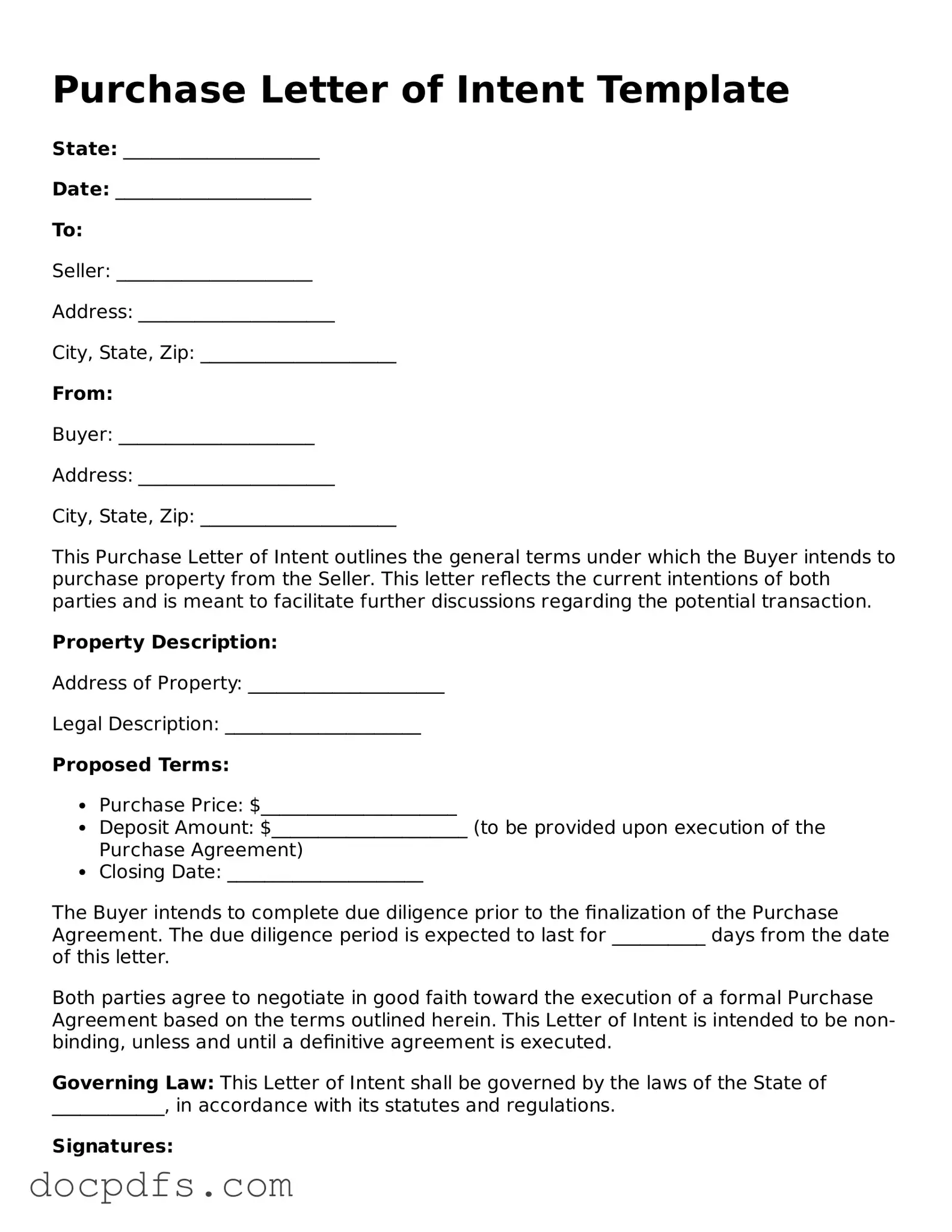A Purchase Letter of Intent (LOI) serves as an important preliminary document in real estate transactions and business acquisitions. It outlines the basic terms and conditions that the buyer and seller have agreed upon before finalizing a more detailed purchase agreement. This form typically includes key elements such as the purchase price, the timeline for the transaction, and any contingencies that must be met for the deal to proceed. Additionally, it may specify the due diligence period, during which the buyer can investigate the property or business further. The LOI can also address confidentiality concerns and outline the responsibilities of both parties during the negotiation process. Although it is not legally binding in most cases, the Purchase Letter of Intent sets the stage for negotiations and helps ensure that both parties are on the same page as they move forward. Understanding the nuances of this form can significantly impact the success of the transaction, making it a crucial component for anyone involved in buying or selling property or businesses.
